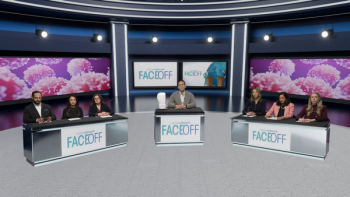
BMS-986393 Appears Effective, Safe in Relapsed/Refractory Multiple Myeloma
GPRC5D may be a promising therapeutic pathway in the treatment of those with relapsed/refractory multiple myeloma, says Susan Bal, MD.
Treatment with BMS-986393 (CC-95266), a GPRC5D-targeted CAR T-cell therapy, appeared to yield significant efficacy and limited, self-resolving toxicity among patients with relapsed/refractory multiple myeloma, according to Susan Bal, MD, in a conversation with CancerNetwork® on data from a phase 1 trial (NCT04674813).1
At the
Data from the trial highlighted an overall response rate of 91% among patients who received the recommended phase 2 dose of 150 x 106 CAR T cells (n = 23) and 88% among all evaluable patients (n = 73). Additionally, the most common any-grade hematologic treatment-emergent adverse effects (TEAEs) among those treated with the CAR T-cell therapy included neutropenia (76.9%), anemia (50.0%), and thrombocytopenia (38.5%); the most frequent non-hematologic TEAEs included cytokine release syndrome (88.5%), hypokalemia (46.2%), and infections and infestations (34.6%),
Transcript:
GPRC5D is an orphan receptor that has been described by some of the work led by Eric Smith, MD, PhD. It’s expressed on the surface of multiple myeloma plasma cells, but luckily, it’s not expressed very often on the surface of normal tissues other than certain parts of the hard keratinized tissue. It has really shown to be a promising therapeutic target for myeloma. We now have an
In the phase 1 program so far—which is still ongoing—84 patients were treated at the data cutoff.1 The safety profile looks very manageable with the typical hard keratinized tissue toxicities being limited in the sense that it affects only about a quarter or less of the patients. These [toxicities] are low grade. There were no grade 3 or higher events seen; these were transient, lasting just [approximately] under 4 weeks on our study, and [were considered] self-resolving. These are significantly less [severe] than what’s been seen with the T-cell engaging strategy. In terms of efficacy, we did see a significantly high efficacy. The recommended phase 2 dose has been determined to be 150 x 106 CAR T cells. At this dose, the overall response rate was 91% with a complete response rate of 48%, so it’s efficacious.
References
- Bal S, Htut M, Nadeem O, et al. BMS-986393 (CC-95266), a G protein-coupled receptor class C group 5 member D (GPRC5D)-targeted chimeric antigen receptor (CAR) T-cell therapy for relapsed/refractory multiple myeloma (RRMM): updated results from a phase 1 study. Blood. 2023;142(suppl 1):219. doi:10.1182/blood-2023-181857
- U.S. FDA approved TALVEY (talquetamab-tgvs), a first-in-class bispecific therapy for the treatment of patients with heavily pretreated multiple myeloma. News release. The Janssen Pharmaceuticals. August 10, 2023. Accessed January 3, 2024. https://prn.to/3KwnjyD
Newsletter
Stay up to date on recent advances in the multidisciplinary approach to cancer.

















































































